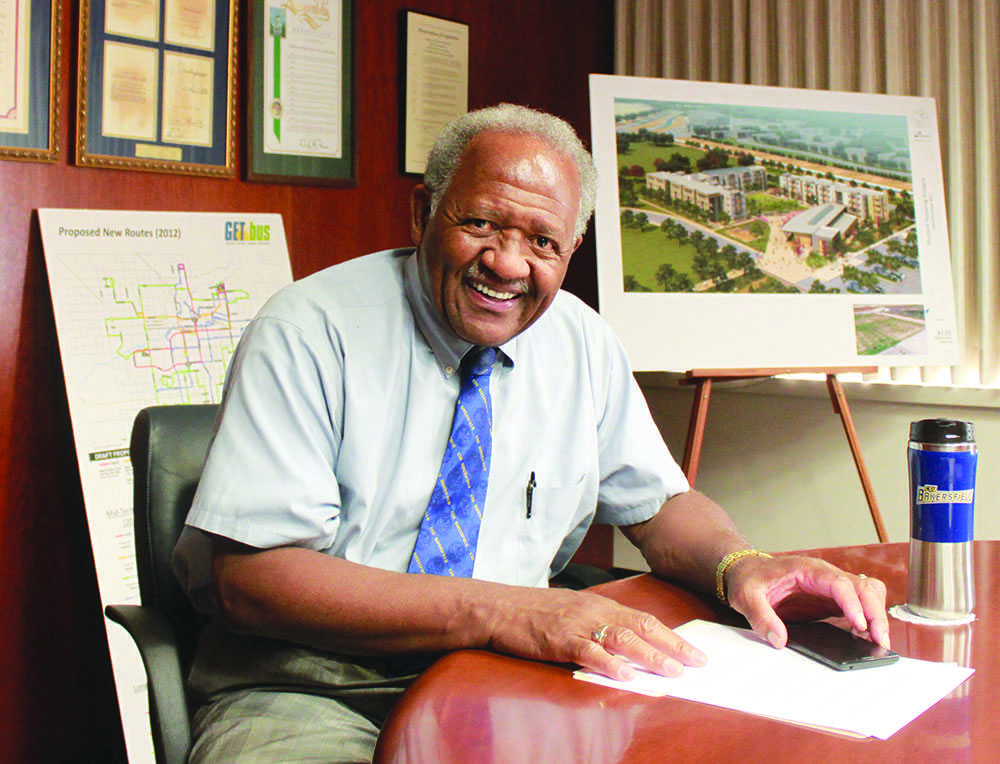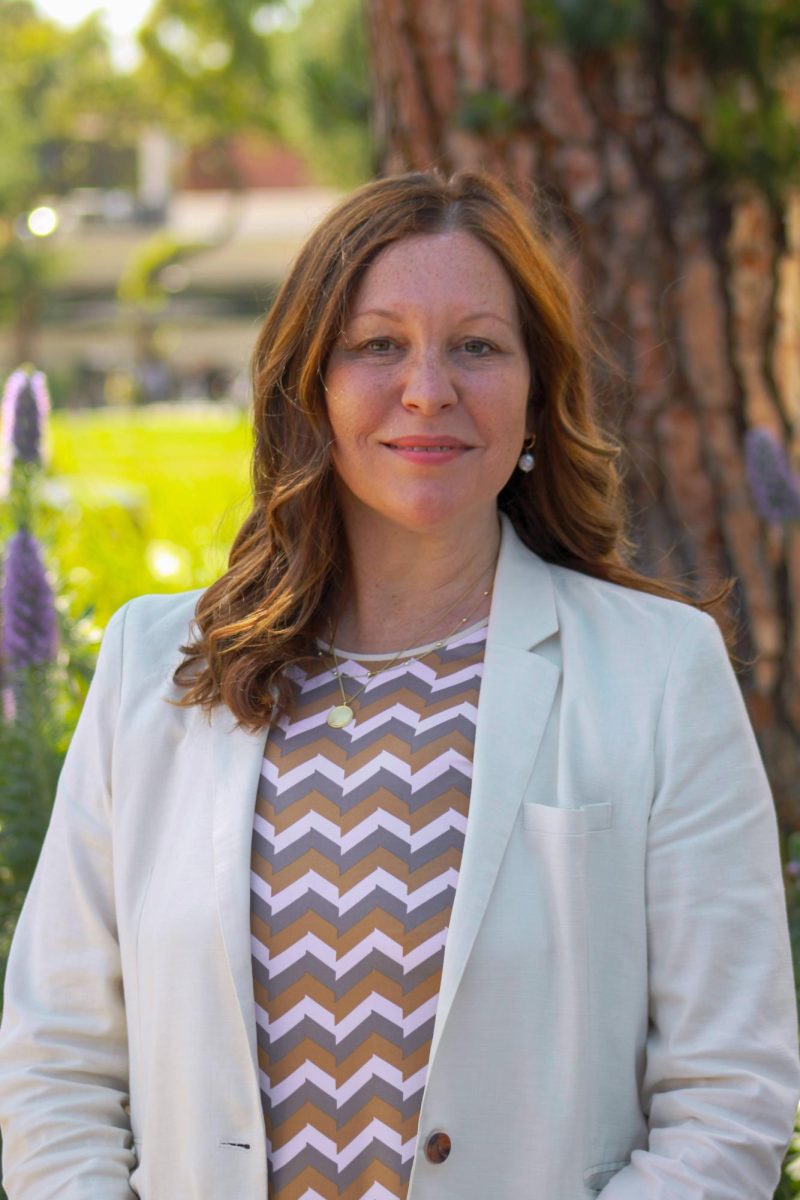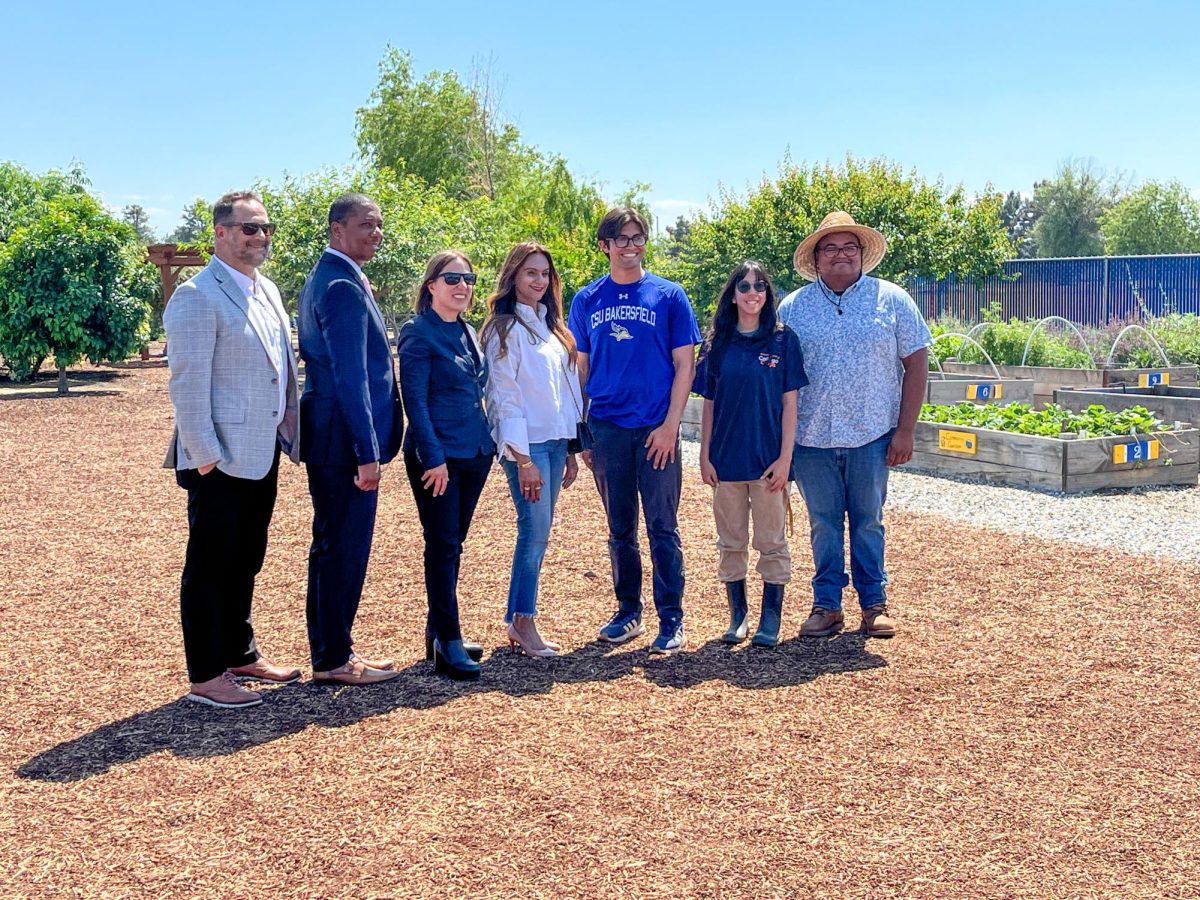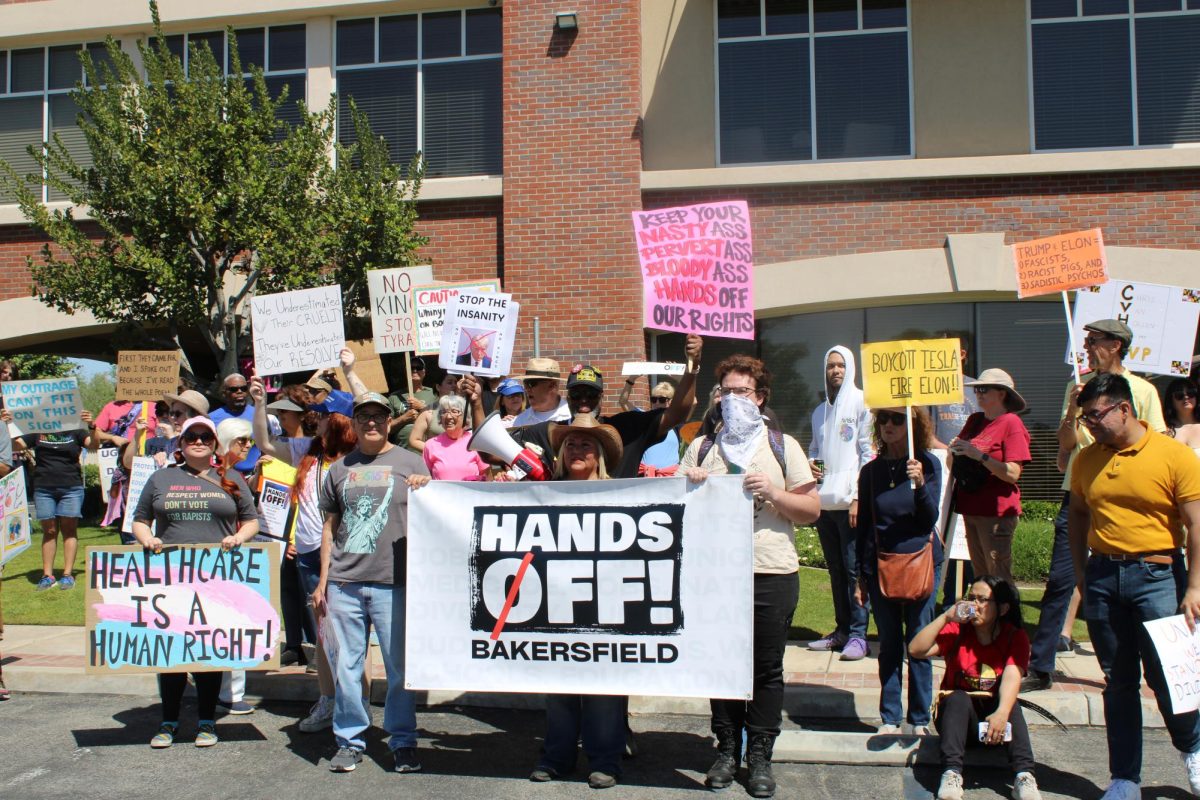Editor-in-Chief
As CSU Bakersfield prepares itself for the quarter to semester change and deals with a high influx of students, CSUB President Horace Mitchell addressed and discussed some of the changes CSUB will see this upcoming year in this sit-down interview.
Esteban Ramirez: One of the big things this year was the quarter-to-semester change. How do you think the preparation for that has gone?
Horace Mitchell: I think the preparation for the quarter to semester conversion has gone extremely well.
On one hand, our faculty have converted courses that are required to be converted. In addition to that, in 70 percent of our faculty programs, our faculty has decided to do what are called curriculum transformations. Rather than convert courses that have been in our catalog for the last two decades, they took this as a once-in-a-career opportunity to re-conceptualize the nature of their academic programs in relation to what students will need in the future. That’s just a phenomenal thing for our faculty to do, and our students will be better for it.
In addition to that, our academic senate has totally reformed our general education requirements from a set of — I’ll call them smorgasbord courses to a set of integrated courses around themes that are in line with a set of university-wide student learning outcomes that we developed several years ago. We’ll have a total new curriculum when we start in the first semester in the fall of 2016.
A very significant part of this was to have each student work with their adviser on individual academic plans.
This has been important to us and to students because we want to make sure no student gets into a situation where their graduation is delayed by the change in the academic calendar. We are guaranteeing students that if they follow a plan that they have worked out with their advisers then they will graduate on time. Now, if students change that plan and decide to do something different, then it depends on what they want to do.
But the process has gone very well and there have been no glitches to speak of.
ER: Why was the quarter-to-semester conversion so important?
HM: The change from quarters to semesters has been important because we believe — and we being the administration and much of the faculty — that a semester academic term provides for more learning opportunities for students than quarters.
One of the big issues is that all of the students that come to CSUB are coming from high schools or community colleges that are on semester. What they don’t realize sometimes is that a quarter is only 10 weeks long. If you don’t get off to a good start, you have problems. There’s not the time to really get caught up in the way that you want. Where as in the case of semesters, they are 16 weeks long.
Some students have raised the concern that in the quarter system I can take three courses and that will be 15 units and that’s going to take care of my being full-time for financial aid purposes. In the semester system, students will have to take four courses. The seat time won’t be that much different, especially when you look at students taking five courses. In the semester, students can take four courses and be full-time for financial aid purposes, however, that won’t get students graduated in four years. For students to get graduated in four years, they need to take five courses for 15 units per semester. It won’t always be five courses because there are different units for certain science courses and science labs.
ER: I’ve noticed from last year to this year the high increase in enrollment. What do you think that does for the whole university itself?
HM: You’re right. We’ve had very significant increases in enrollment and the reason for that is that we want to provide as many opportunities for students as we can.
There are two aspects to that: one, is providing access and the other is making sure that students have the courses they need to make progress. We made a commitment to make sure there are sufficient courses and sections for students to make progress toward their degree. Our enrollment is larger than our state-funded enrollment and it has been consistently for the last several years.
The state does not provide any additional funding for the number of students we have that are over our budgeted enrollment ceiling. We do get money from the fees students pay, but the overall cost of education is covered by the fees students pay and the amount that the state puts in per student. That state amount per student isn’t there when we are over the ceiling, so we have to be very deliberate about making available the resources to hire the part-time faculty that might be necessary in certain areas to have the range of courses that students need.
The other thing we have done is that we have gone to year-long schedules of courses, so that students will know for the whole year what courses will be available. There is some interest in having a two-year calendar. We are not quite there yet, but the one-year calendar is something that is very important.
ER: When you have such an increase in enrollment and the classroom sizes are just not that big because the previous years the enrollment wasn’t as high, how do you try to accommodate for more students now?
HM: One of the things that we have in process right now is that we have approval from the CSU Board of Trustees to build what, at the moment, is referred as the Humanities Office Building and that will be a replacement for Faculty Towers. We have authority to do that and we have made that possible in part by dedicating about $1.5 million of campus reserves to help pay for that building and the chancellor’s office is paying for the rest of it.
Our original proposal for that building also included two large classrooms that would accommodate about 140 students each. We just don’t have enough classrooms that are larger, so in some cases, classrooms are busting at the seams. In other cases, we need to have three or four sections of a course in the size classrooms that we have instead of a single course with 140 students.
The chancellor’s office determined that we have enough classrooms for the size of our enrollment, and the case we made to them is, “yes that’s true, but these are small classrooms and we have the additional cost of hiring more instructors to teach more sections. If we had these larger classrooms, we wouldn’t have this problem.” They have now agreed with that and we have committed an additional $800,000 of campus reserves to make it possible for the chancellor’s office to cover the rest of it.
Those two classrooms will become part of the Humanities Office Building, and essentially the timing of those will be a little bit later than the construction of the building.
ER: When do you think that will be done?
HM: Well, the Humanities Office Building we are looking to [fall 2017]. The plan would be that we remove all the faculty out of Faculty Towers during that time before the new semester starts then we would tear down that building. The classrooms would follow as soon there after it’s feasible.
ER: What are the plans for the old dorms and the Faculty Towers?
HM: In the case of the Faculty Towers, they will be torn down because they are deficient in terms of seismic requirements and they are also deficient in terms of ADA requirements. It’s simply not cost-effective to try and improve them.
With respect to the old residence halls, I just issued [last month] the plan for how that space will be used. It does look at the eventual removal of the [modulars] and essentially to move some of those units into the old residence halls, and everything we do in the old residence halls that’s not residential has to be on the first floor. The reason for that is that if we use higher floor then that will trigger other kinds of code requirements either ADA or building codes like that. So to minimize cost we are just using the first floor. Although, we will use some of the space for possible student housing for upper-division students and guests of the university.
ER: What are your priorities for 2016?
HM: First, to have a successful implementation of the quarter to semester conversion.
Then, building the Faculty Towers replacement building, which is the Humanities Office Building. That is a major priority for us.
We are going to continue to focus on student access and student success, so I would project that we will continue to have enrollments that are higher than our enrollment ceiling. Probably if not next year but by the following year, we’ll have a student enrollment in excess of 10,000 students for the first time.
Another priority we have as a campus is that right now we have a joint-doctoral program in education leadership with Fresno State University. It is part of a plan that we’ve had where Fresno State offered its educational doctorate program here at CSUB and are in partnership and collaboration with us. So the first three groups of students or first three cohorts in the program got their degrees from Fresno State. We are now at the point that students will get a joint-degree from CSUB and Fresno State, and we are right now in the process of transitioning the program where it becomes an independent doctoral degree from CSUB. There are processes with our academic senate on campus, with the chancellor’s office and with our accrediting body called W.A.S.C (Western Association of Schools and Colleges). All of which need to be completed to get this done and that is a very high priority for the campus.
If I were to give you my top four priorities, those would be the ones.
ER: You helped to get athletics into Division I, so how pleased are you with the recent successes that they have had?
HM: You’re right. When I arrived as president, which is now 11 1/2 years ago, we were in Division II and we made a collective decision to move to Division I and that has happened. We are there now and in fact we are being very successful. So we have actually done very well in athletics. Turns out we have been in more championship games than any team in the WAC. We won two of those championships and two of those we didn’t win. The ones we won were in volleyball and baseball and that has been good. Our basketball teams I think are going to do very well and our other teams are positioned to do well, so I’m very pleased where we are and expect to get more and more success.
I think what’s important to me as president even more than competitiveness is the success of the student athletes. They actually have a higher grade-point average than the student body as a whole, and they are now approaching an average GPA across all student athletes about 3.0, which is really quite good. I’m very pleased with what we are doing, and of course we now have (Kenneth) “Ziggy” Siegfried as our permanent AD. I have assigned responsibility for oversight of athletics to Dr. Thomas Wallace, who is our vice president for student affairs. That doesn’t mean I haven’t advocated any responsibilities. It means that he assists me because ultimately the oversight is a presidential responsibility.
ER: When do you see yourself retiring? Will it be soon or do you think it will be in the future?
HM: It’s certainly going to be in the future. I have no retirement plans at this point and I have what my wife refers to as a bucket list of things I want to get done.
But this is my 12th year and I think the campus is moving along well. I think the faculty and staff are working very hard in all aspects of the university in particularly in supporting student success. I say to our faculty and staff all the time how much I appreciate what they do to serve our students and our communities. I say that it is only when all of us do the things that we are supposed to be doing that we have the successes that we intend to have as a university.








